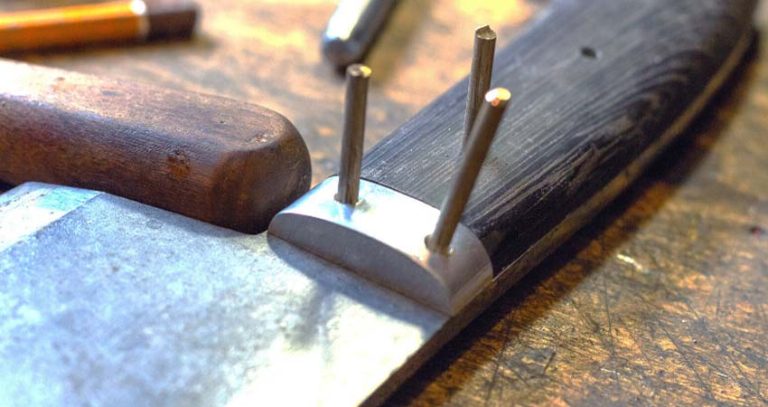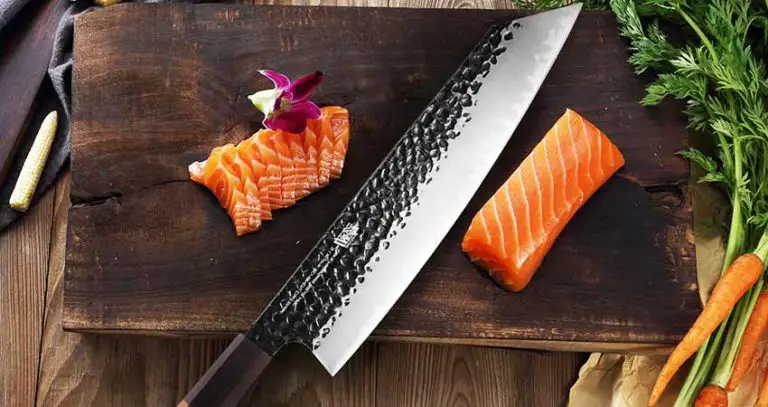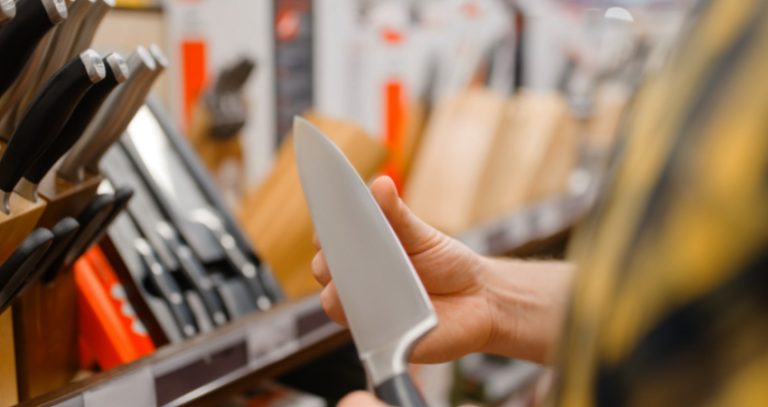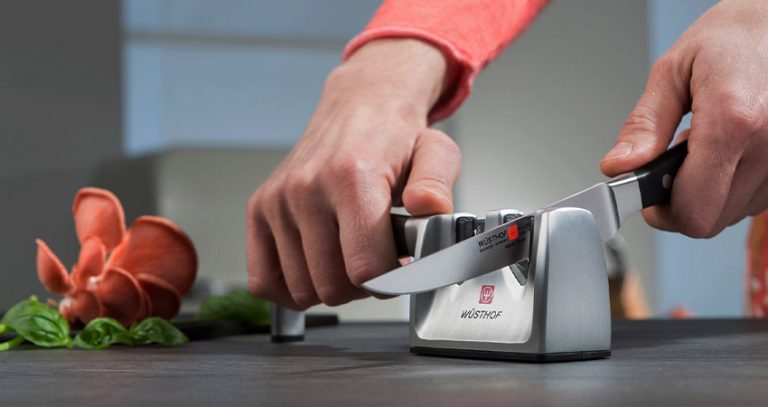Knife Vs Sword: A Comprehensive Discussion
The knife and the sword, are two of the most iconic weapons of all time! While both things are sharp, they have a lot of differences.
So, who would win in a knife vs. sword fight? It all depends on the size of the comparison. Nonetheless, the knife is mainly chosen when it is used regularly and is light to carry. Sword, on the other hand, has an ancient legacy. You can keep swords if you enjoy keeping some history around you.
We’re about to dive deep into a comprehensive discussion that will explore everything from their history, to design and usage. So, buckle up and get ready to join us on this epic journey into the world of blades!
Knife vs Sword: Knowing the History
Before going to the brief battle, let’s know the history of both blades.
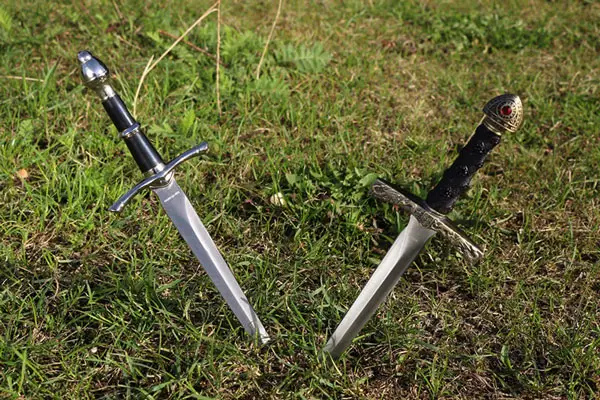
The knife is ancient
Knives were among the first tools used by humans, emerging about 2.5 million years ago.
The earliest knives were made with flint. The Bronze Age saw the emergence of the first single-edged knife about 4,000 years ago. Initially, it was used for various tasks such as hunting, cooking, and carpentry. But the experts say that people started to use it in daily work just 500 years ago.
The sword is iconic
It’s fascinating to think that the mighty sword is an iconic symbol of medieval times. Interestingly, it originated from the knife. As time passed, the sword began to differentiate itself from the dagger, evolving into a long-bladed weapon. It was during the bronze age, around 3,000 BCE.
Knife vs Sword: A Blade Battle
First, let’s have a quick look at the basic comparison based on different parameters.
| Parameter | Knife | Sword |
|---|---|---|
| Size | Usually between 6 to 12 inches | Typically longer than 2 feet in length |
| Blade | Normally has a singlecutting edge | Generally edged on both side |
| Weight | Approximately between0.062 to 1 pound | Between 1 to 6 pounds |
| Purpose | Hunting, cooking, self-defense, etc. | Only used in combat, and sports |
| Material | Various steel, ceramic,plastic, titanium, wood, etc. | Carbon, iron, bronze, steel,ceramic, etc. |
| Type | Chef’s knife, pocket knife,hunting knife, etc. | Longsword, Backsword,Falchion, Estoc, Claymore, Parametric, etc. |
| Maintenance | Needs regular sharpening and cleaning | Needs regular basic clean-up,oiling the blade, andpolishing the hilt |
You may notice in most of the parameters both blades are different from each other. Now, we will discuss each of the parameters and decide which one might have a lead. Let’s get the ball rolling!
Size: knives are smaller but effective
There are several sizes of knives and swords with differences in the handle length, total weight, and length of the blade. The purpose for which a knife or sword is intended determines its size.
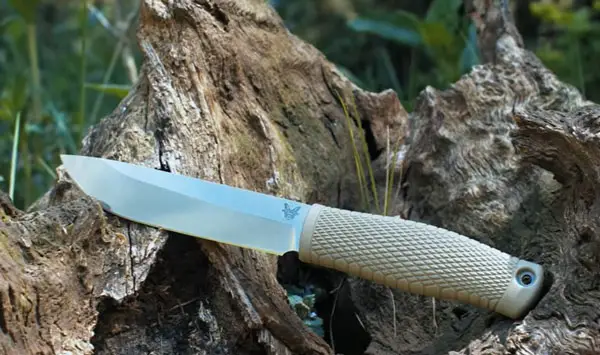
Here are some varieties of knife sizes:
- Chef’s knife: 8-10 inches (20-25 cm)
- Paring knife: 3-4 inches (7.5-10 cm)
- Bread knife: 8-10 inches (20-25 cm)
Here are some varieties of sword sizes:
- Longsword: 35-47 inches (89-119 cm)
- Katana: 23-29 inches (58-74 cm)
- Rapier: 37-45 inches (94-114 cm)
In general, this era isn’t war prone. So, in the age of technology, none will battle with a sword in their hand. In this case, the knife has a lead.
Material: knives and swords use various materials
Knives and swords come in a variety of materials.
Materials used in swords include Damascus steel, titanium, carbon steel, iron, bronze, and ceramic.
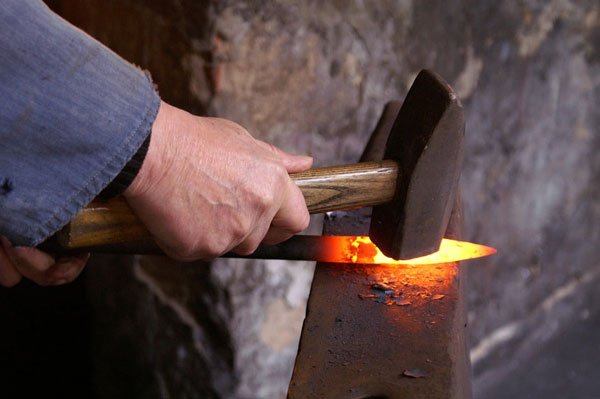
Knives are composed of materials that are quite similar to those used in firearms. Steel, ceramic, plastic, titanium, and wood are just a few examples.
In terms of materials, both the knives and swords are unique and have a similarity. So, in this segment, it is a draw between this two.
Sharpness: the knife is sharper than sword
The knife is superior to a sword in terms of blade sharpness. Although Swords are made to have a convex edge, Knives are still better in terms of the force applied. Because knives are razor sharp and require less effort to cut stuff, which makes them more advantageous.
A blade’s sharpness may also depend on the techniques utilized in its creation and sharpening. Some knives have highly delicate, thin edges that make them extremely sharp. But these also make them more brittle and susceptible to breaking or suffering other sorts of harm.
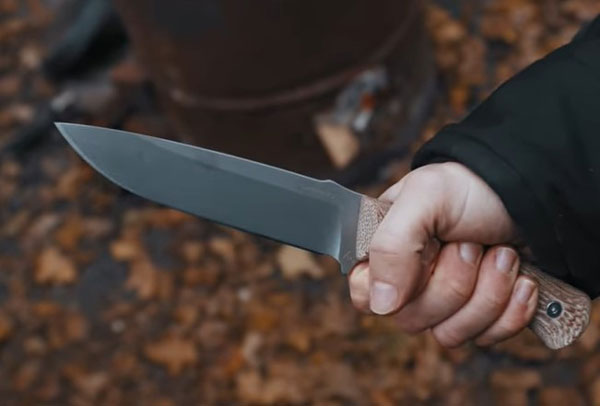
While not quite as razor-sharp, swords often have slightly bigger edges that can take more use without shattering.
So, in terms of blade sharpness, we can say that knife is better than a sword.
Weight: the sword is heavier than a knife
Swords are heavier and bigger than knives. The weight of a sword depends on its blade and the materials used in general. Knives are smaller and lighter than swords due to their one-handed design and narrow blades.
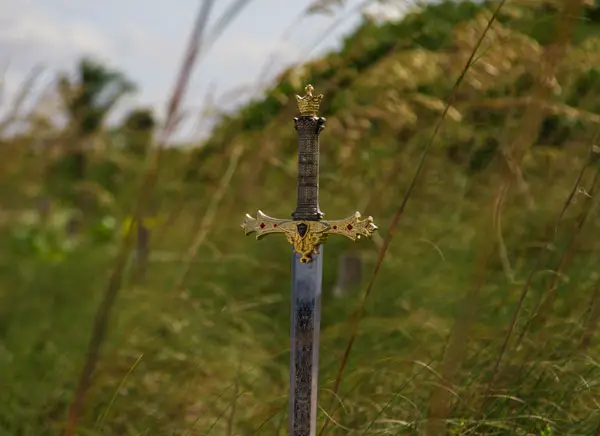
However, the weight of a blade affects how it is used. Swords are good for cutting big and strong things, while knives are better for small items like fruits and vegetables.
Ultimately, the choices are up to the user and as both have their benefits and drawbacks, they’re equal.
Usages: knives serve on multiple purposes
Swords and knives both have sharp edges and can be used for several tasks. Knives are typically used tactically or for cutting and carving.
Often, it is employed for more intricate and exact tasks like carving wood, opening packages, slicing, and dicing meats and fruits, overall in the kitchen, mostly. Knives can be used for self-defense as well.
Swords, however, are intended to be used in warfare and were traditionally employed in hand-to-hand combat during battles and duels. And nowadays, swords are frequently utilized in stage productions, and sports.
Maintenance: a knife is typically easier than a sword
A knife is easier and more flexible to maintain than a sword. It is due to its simple design, smaller size, and ease of cleaning and sharpening. Swords, on the other hand, may sometimes be difficult to maintain. Overall, a knife is simpler to use as there is less to learn.
In contrast, swords are larger and heavier with a double-sided wedge, making them more challenging to maintain. Moreover, proper maintenance, sharpening, and storage may require specialized equipment and procedures.
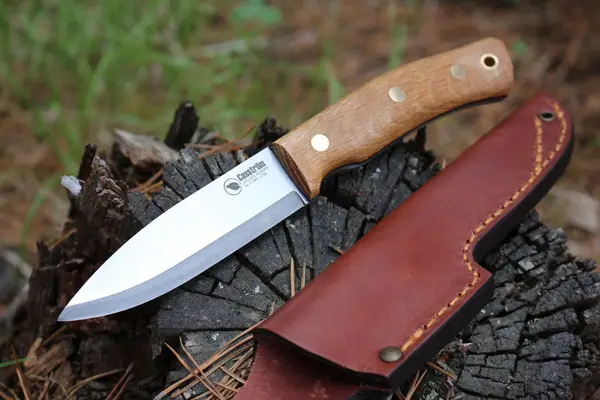
Especially for expensive or antique swords, these require delicate handling to prevent damage to the grip or blade.
So overall, it is visualized that knives, in terms of reality, purpose, and maintenance, have a lead. Therefore, knives are preferable compared to a sword. And in a modern-day battle between a knife and a sword, the knife is won based on different parameters, especially, in terms of real-life use.
FAQs
Do you still have further inquiries? Keep your eyes on this section.
Q: What’s the best way to sharpen a knife?
The best way to sharpen a knife depends on the type of blade and its level of dullness. Generally, a sharpening stone or honing steel is used to sharpen a knife.
Q: Why are some swords curved?
The curve in some sword blades is designed to improve the sword’s cutting ability. This creates a longer cutting edge and allows the blade to slice through targets more efficiently than a straight blade.
Q: Is carrying a sword illegal?
In many countries, carrying a sharp weapon is prohibited. Although, in some countries, it isn’t illegal to carry it with the required permission.
Conclusion
In summary, both knives and swords have their unique features and purposes. The knife, with its smaller size, lighter weight, and sharp edge, is often preferred for regular tasks. These may include cooking, hunting, and self-defense.
Meanwhile, swords have an ancient legacy, and cultural value and are iconic symbols of medieval times. Ultimately, the choice between a knife and a sword will be chosen over intended purpose, personal preference, and cultural significance.


